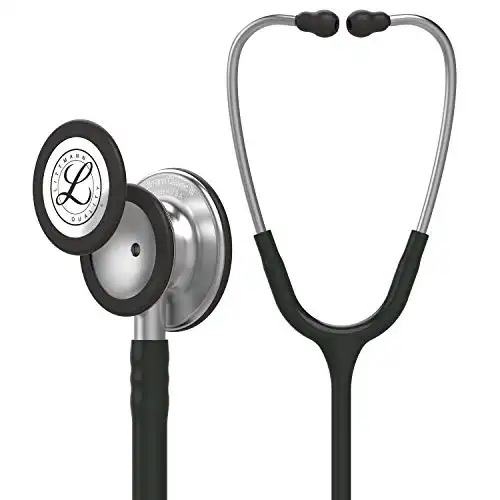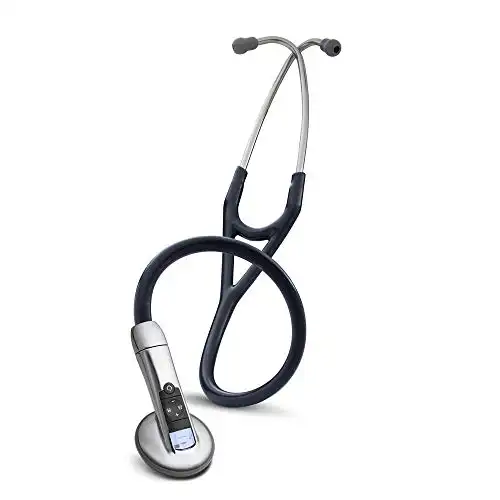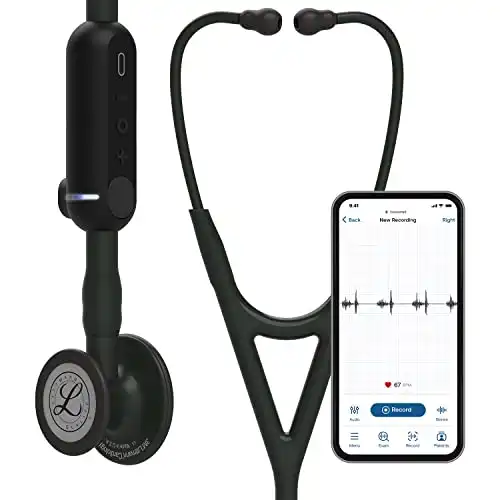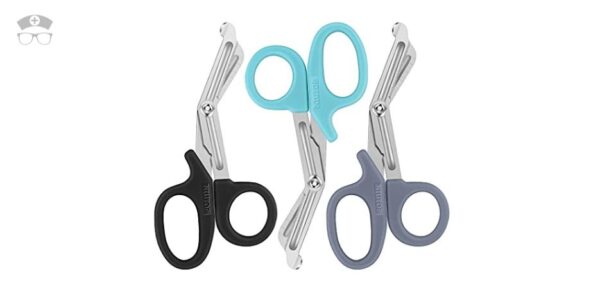Do you know all the parts of a stethoscope? You likely already know that a stethoscope is an iconic symbol of healthcare professionals worldwide, serving as a vital tool for diagnosing and monitoring patients’ health. Yet, to wield this instrument effectively, you have to understand its intricate components.
So, if you’re a new nurse just dipping your toes into the exciting waters of healthcare, don’t be intimidated by that stethoscope hanging around your neck! It’s not just a piece of equipment; it’s your trusty sidekick on this incredible journey of healing and caring. In this article, we delve into all the parts of a stethoscope so you can truly know it inside out.
Table of Contents
What is a Stethoscope?
Stethoscopes are medical instruments designed to listen to the sounds inside a patient’s chest, like their heartbeat and breathing. They help us check how well the heart and lungs are working and if the airway is clear.
Stethoscopes are crucial for diagnosing and monitoring patients’ health conditions, allowing healthcare providers to assess and interpret internal bodily functions and abnormalities. Healthcare professionals must pay close attention to these sounds when examining the chest, especially when the patient is breathing normally. It can be challenging to master your technique and learn to accurately identify normal sounds and then differentiate them from abnormal sounds, but it all comes with practice.
Parts of a Stethoscope
To use it well, you should know how it works and the parts it is made of.
- Chest piece: This is located at the tail end of the device. It has two surfaces:
- Diaphragm: a flat, circular surface that enters in direct contact with the patient’s skin. Is used for picking up higher-frequency sounds, like normal heart sounds.
- Bell: a broader, hollow, cup-shaped component located on the other surface, also enters in direct contact with the patient’s skin, and is used for picking up lower frequency sounds, such as certain heart murmurs, or bruits in blood vessels. The bell is designed to capture and transmit these deeper sounds effectively for diagnostic purposes during auscultation.
- Stem: This is the metal part of the stethoscope that connects the tubing part to the chest piece. In stethoscopes that have both the bell and the diaphragm, this part allows the nurse to switch between them by turning the chest piece.
- Flexible tubing: The sound waves are propagated via this hollow tubing. These come in different colors and can be personalized to match the nurse’s personality (it’s probably the most aesthetic part of it). (p.s. If you like colorful or personalized stethoscopes, you might enjoy my articles 10 Perfectly Pink Stethoscopes and 9 Top Sparkly Stethoscopes For Some Bling.)
- Headset: This is formed by the components of the upper part of the stethoscope.
- Binaural earpiece or ear-tubes: These are 2 tubes located at the end of the tubing made from metal. Their primary role is to transmit the sounds from the chest piece (diaphragm or bell) to the listener’s ears.
- Binaural spring: This metal component connects ear tubes to the headset. It’s an essential component that ensures that the earpieces are securely attached to the headset while allowing for adjustments to accommodate different ear sizes and angles.
- Earpieces: earpieces are comprised of compact, circular tips located at the extremities of the ear tubes, designed to fit snugly into the ears. The sounds are then channeled through these ear tips directly into the listener’s ear canals.
Other Interesting Facts About the Parts of a Stethoscope
- Incorporating an ethylene propylene diene monomer as a flexible diaphragm has been shown to improve sound analysis, according to studies.
- You can engrave your stethoscope: Did you know that you can engrave your stethoscope with your identification tag? This is done on the bell part and can be useful in case you lose or misplace it. (If you want to engrave your stethoscope but don’t know how, I’ve got an article for that!)
- A Doctor may steal your stethoscope: Don’t leave your stethoscope lying around. Whether it’s cheap or expensive, it’s really easy for someone to “borrow it” and then conveniently never return it. This could be a doctor, another nurse, tech, or really anyone who has access to the nurse’s station. This isn’t usually intentional, but it can be a costly mistake.
The Purpose of Using a Stethoscope
A stethoscope serves the purpose of listening to heart sounds during auscultation. Keep in mind the next tips for interpreting the sounds:
- High-pitched sounds are typically identified using the stethoscope’s diaphragm, while low-pitched sounds are detected using the bell.
- During the auscultation process, two normal heart sounds, namely S1 (lub) and S2 (dub), should be observed.
- The nurse conducting the examination should carefully listen over each of the four primary heart valve regions: aortic, pulmonary, tricuspid, and mitral.
- Remain vigilant for any unusual sounds, such as clicks or heart murmurs.
Other functions are to listen to the lungs (pulmonary auscultation), to evaluate bowel sounds (abdominal auscultation), and to manually measure blood pressure with blood pressure cuffs (also known as a sphygmomanometer).
Technological Advancements of Stethoscopes
Let’s compare the evolution of technology from analog to digital stethoscopes, becuase we’ve come a long way!
Analog
Summary: Age-old instrument + Tried and tested + Cheap + Lightweight + Easy to use
Example: 3MTM Littmann Classic III TM Stethoscope
Features of Analog Stethoscopes:
- Double-sided chest piece
- Single-piece tunable diaphragm
- Weight 150g
Electronic
Summary: Sound amplification and processing + Noise cancellation + Recordability
Example: 3MTM Littmann Electronic Stethoscope Model 3100
Features of Electronic Stethoscopes:
- On average 85% average noise reduction
- Up to 40x amplification
- Remote auscultation
- Weight 185g
Digital
Summary: Integration of smartphone applications + Shared user experience + Graphic user interface + Machine Learning and AI
Example: 3MTM Littmann CORE Digital Stethoscope
Features of Digital Stethoscopes:
- Compatible with smart devices to visualize, record and share data
- Up to 40x amplification
- Active noise cancellation
- Weight 232g
A Stethoscope that Stays on the Patient
New technologies such as wearable stethoscopes are able to record and visualize sounds. This provides a wireless and continuous way to listen to a patient’s internal sounds. This wearable system can be used as a tool to diagnose different diseases. These modern digital stethoscopes are valuable technological advancements made for healthcare professionals to use in clinics and for teaching purposes.
In the world of healthcare, the stethoscope is more than just a tool; it’s a symbol of empathy, expertise, and unwavering care. Wear it with pride, learn its secrets, and let it be your guide as you make a difference, one heartbeat at a time. Here’s to the incredible nurses who make the world a healthier and happier place. Keep listening, keep caring, and keep shining!









